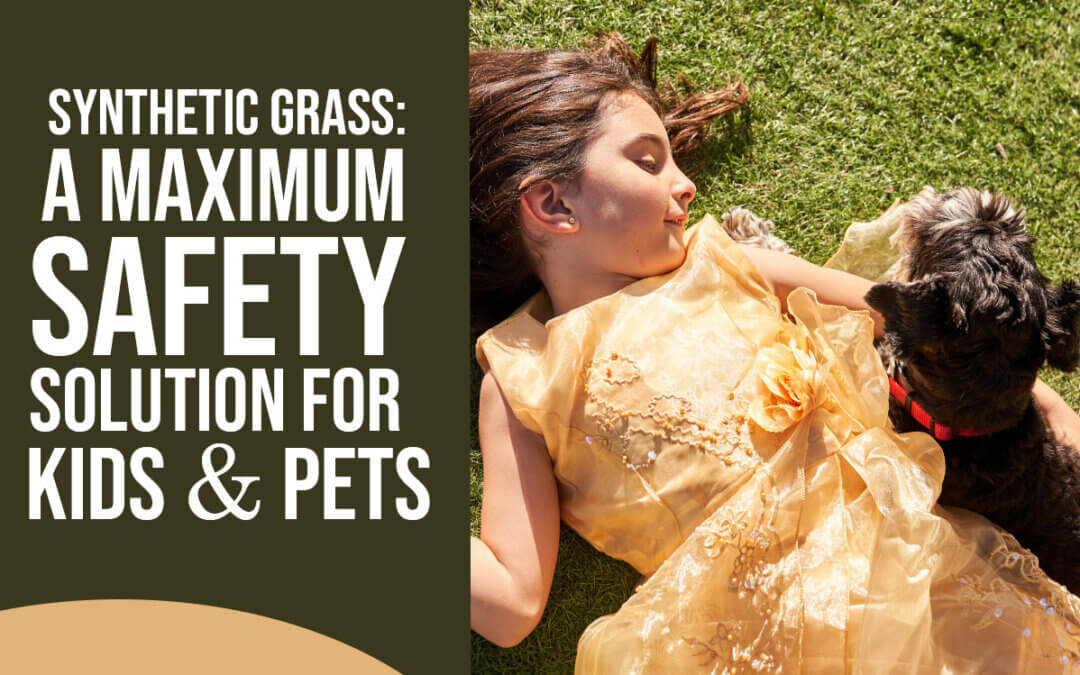For families with children and pets, safety is the top concern when choosing ground coverings. Natural grass may seem like the safe, default choice, but it poses many hidden hazards. Modern synthetic grass offers safety advantages that manufacturers have purposely engineered into the products.
The Hidden Dangers of Natural Grass
At first glance, lush green lawns appear harmless. However, dangers lurk beneath the surface of natural grass.
Allergies and Asthma Triggers
Grass pollen is one of the most common seasonal allergy and asthma triggers. For sensitive individuals, exposure can cause severe respiratory distress. Natural grass also harbors mold, fungi, and irritating lawn chemicals.
Insects and Pests
Bees, fire ants, ticks, and mosquitos love inhabiting lawns. Insect bites and stings can cause painful reactions plus illnesses like Lyme disease. Chemical pesticides used to control pests on lawns present even more health hazards.
Hazardous Lawn Chemicals
To maintain healthy growth, natural grass requires frequent fertilizer, herbicide, and pesticide application. Runoff from these chemicals pollutes waterways. Overexposure through lawn treatments or play can cause poisoning.
Uneven Surfaces and Trip Hazards
Natural lawns have bumps, holes, rocks, slopes, and other uneven areas. These variations can easily lead to twisted ankles or serious falls requiring medical attention.
Artificial Turf Virtually Eliminates These Risks
Unlike natural grass, today’s artificial turf is engineered with safety in mind. Manufacturing advances have helped artificial grass become hypoallergenic, low maintenance, and free of hazards.
Hypoallergenic and Low Irritant
Reputable artificial grass brands use polyethylene fibers that minimize allergens, mold, and other irritants. Without organic matter, artificial lawns don’t trigger respiratory issues.
No Need for Lawn Chemicals
Artificial grass never needs fertilizer, herbicides, or pesticides. It’s maintenance-free beyond an occasional rinse. There’s no chemical exposure concern for people or pets.
Discourages Insect Populations
With no organic matter, artificial grass doesn’t attract or support insect populations. Mosquitos, ticks, and ants are far less prevalent.
Cushioned Backing Reduces Injuries
Quality synthetic turf features a shock-absorbent padding. This cushioning base prevents hard falls and minimizes injuries from impacts. It’s safer than concrete or packed dirt.
Added Antimicrobial Treatments
Some artificial grass incorporates antimicrobial treatments into its fibers and backing. This prevents bacterial growth and mold if moisture gets under the turf. It ensures good sanitation.
Pet-Friendly Design Options
For homes with dogs, pet-friendly artificial grass includes antimicrobial agents plus urine drainage. This prevents odor build-up in the sub-base. Permeable designs allow liquid to pass through.
Heat Resistance Technology
Basic artificial grass can get hot in the summer sun. Premium synthetic turf uses heat-diffusing pigments and materials in the blades and base. This keeps surface temperatures comfortable for bare feet.
Rigorously Tested for Toxins
Concerns about lead content or toxic materials are outdated. Reputable brands meet rigorous standards for hazardous substances through regular third-party testing. They also follow local regulations.
Maintain a Kid and Pet-Friendly Yard with Artificial Grass
Artificial grass eliminates the hidden hazards of traditional lawns while offering many engineered-in safety advantages. For families concerned about allergies, injuries, and chemicals, synthetic turf promotes health and peace of mind. It deters bugs without the need for pesticides.
If you have more questions about how artificial turf can provide a safer outdoor space for your family, contact us at 408-317-0931. We’re happy to offer a free quote and design consultation to determine which artificial grass best suits your yard.

